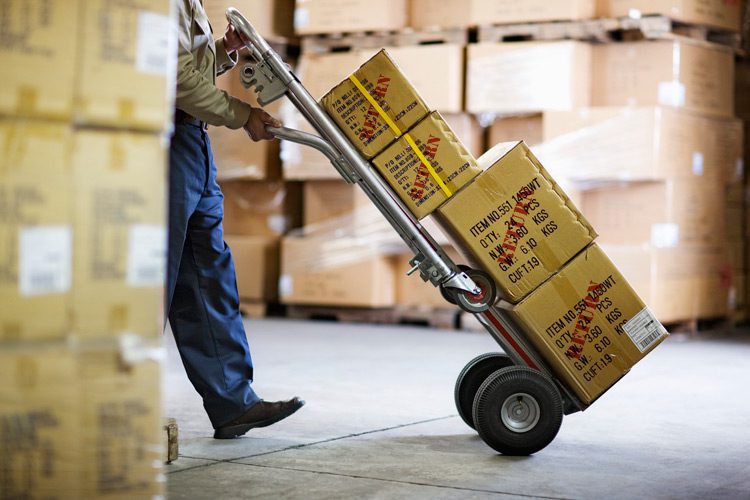
- Process of receiving goods: The behavior of handling products into the warehouse and into the system

The pick-up process can be applied to single products, items, liters, boxes, packages, crates, kilograms or pallets. The best way to receive products is through an Advance Shipping Notice (ASN) from the supplier. With this information on the system, operators can scan consignment barcodes to upload to the ASN. If the delivery matches the ASN, then the goods can be entered into the receiving system. But at this point, the cargo is still considered processing, even though it may be ready for storage. Some systems allow goods to be received into inventory at this point, while others require goods to be sent to a specific inventory location before the inventory location is updated. . The receiving process depends entirely on the customer’s requirements and how the system is set up.
- Procedure for storing goods in a predefined location

The stocking process begins when the operators receive a stock order from the enterprise’s ERP (Enterprise Resource Program) or WMS (Warehouse Management) system. Then scan the relevant commodity barcode to prepare for the stocking operation. If there is no barcode, manual entry can be performed, to confirm that the goods are authentic. At this point, the system directs the personnel to transport the goods to the relevant storage location. Once the items are in the designated area, the operator will either scan the barcode or manually confirm that the correct location has been found, then place the item in place before confirming that the stocking process is complete.
- Pickup

- Pack

- Goods must be tracked from the location where they are stored, along with the date, time, and item number.
- Accuracy testing and quality assurance must be built into the process.
- Picking from different areas of the warehouse should be easily combined and managed by the system to ensure order fulfillment.
- Goods must be packed according to size, quantity, temperature, toxicity, value, fragility, hygiene requirements and applicable law.
- Shipments should always be systematically tracked for documents and invoice numbers for future traceability.
- Distribution

The secret behind the success of distribution lies in the ability to have goods ready for departure, just in time for the carrier to load the truck. Distribution center managers must forecast and schedule packaging and distribution operations according to the service provider’s arrival time. For example, if goods are ready too soon, there will be disturbance in handling areas, while if delivery is later than planned, it will delay loading and potentially cause delays. late delivery.
- Process of handling returned goods (Return)

- When customers return goods, find out what items are being returned and why they are being returned.
- All recalled goods must be tracked: orders, documents and invoices.
- Companies must have a return procedure to define the activities of handling goods after they have been returned to the warehouse, e.g. return to the warehouse, repair, destruction, disposal, recycling, return to the manufacturer. export, etc.
- All credits must be recorded along with the reason why the goods were returned.
- Inventory information must be updated when goods are returned for storage, or for other use.
- The process of adding value to the product

Conclude
From the above analysis, you may have realized that the modern distribution center supply chain is an integration of many complex processes, activities and transactions. But now, with the continuous improvement of technology, starting with investing in ERP and WMS systems designed to suit the situation of each business, are the essential elements to stay competitive. competition and improve operational efficiency to bring the highest benefits to businesses in the new era.
Citing electronic information sources: Theo logistics bureau.com, “7 main processes in warehouse operations”, see at: https://vilas.edu.vn/7-quy-trinh-chinh-trong-hoat-dong-cua-kho-hang.html (November 12, 2018)




